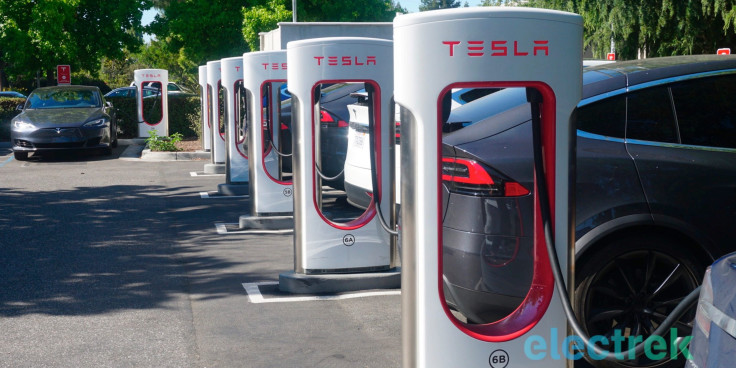Tesla To Launch Faster Charging Technology, New Patent Reveals

Tesla is looking to introduce a new charging cable connector for its electric vehicles to speed up charging, a new patent revealed.
One of the biggest drawbacks for Tesla EVs is it still takes far too long to charge one. On an original 85 kWh Model S, charging to 100% can take up to 75 long minutes. It takes 20 minutes to charge to 50%.
Even the next generation Tesla V3 Supercharger launched a few months ago will reduce typical charging times to only 15 minutes. Tesla believes V3 Supercharging will “ultimately cut the amount of time customers spend charging by an average of 50%.”
It won’t take anywhere near 15 minutes to fill-up the 36 gallon tank on a Ford F-150 pickup. And most motorists just top-up but don't fill-up.
The standard charging cables and connectors on Tesla Superchargers can't handle super high voltage because they can't dissipate heat fast enough and will overheat. That's because a Tesla Supercharger delivers 480 volts of DC power.
Each Supercharger stall has a connector (or the component that actually plugs into the car) that delivers electric power ranging from 72 kW to 250 kW via a direct current connection to the 400 volt car battery pack. This limitation causes long wait times.
Tesla's solution to deliver faster charging times involves installing liquid-cooled charger connections. That's because the cooler the connector, the higher current load it can handle.
A liquid-cooled charger connector allows for much faster charging of Tesla EVs. Any Tesla owner can appreciate this convenience.
To be accurate, Tesla has rolled out a liquid-cooled charging cable at its new V3 Supercharger station. A liquid-cooled connector will further speed-up the entire charging process.
Tesla has filed a patent application with the U.S. Trademark and Patents Office for "An inlet conduit and an outlet conduit within the manifold assembly" that together "create a fluid flow path."
Tesla has indicated the new liquid-cooled charger connectors will roll-out to Supercharger stations in the near future. In the meantime, Tesla owners can content themselves with the new V10 software update started to became live last week.
They can also take comfort in the knowledge the new V3 Superchargers Tesla has begun installing offer peak charging rates of up to 250 kW per car compared to the current 120 kW per car.
The V3 means that in about five minutes, a Model 3 Long Range will absorb enough power to get to 75 miles. Also, the newest Supercharger stations don't need to split power between two Tesla EVs. Full power is available all the time for a single car's battery.
© Copyright IBTimes 2024. All rights reserved.





















